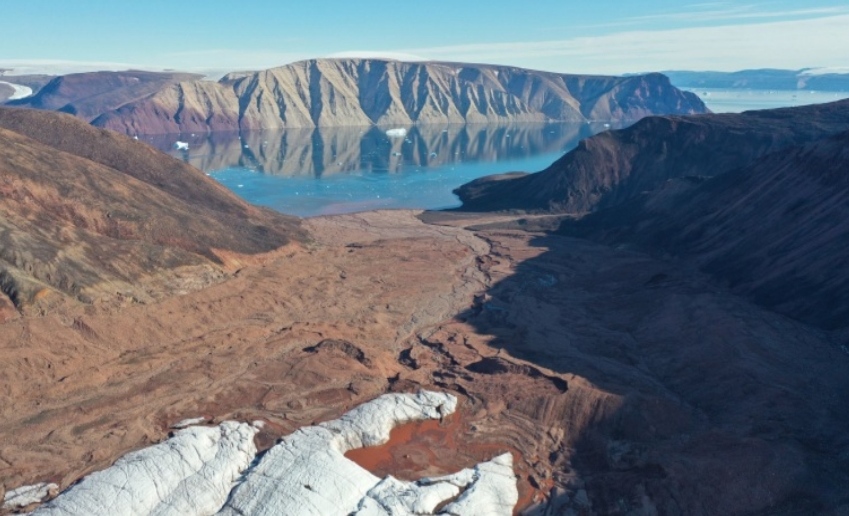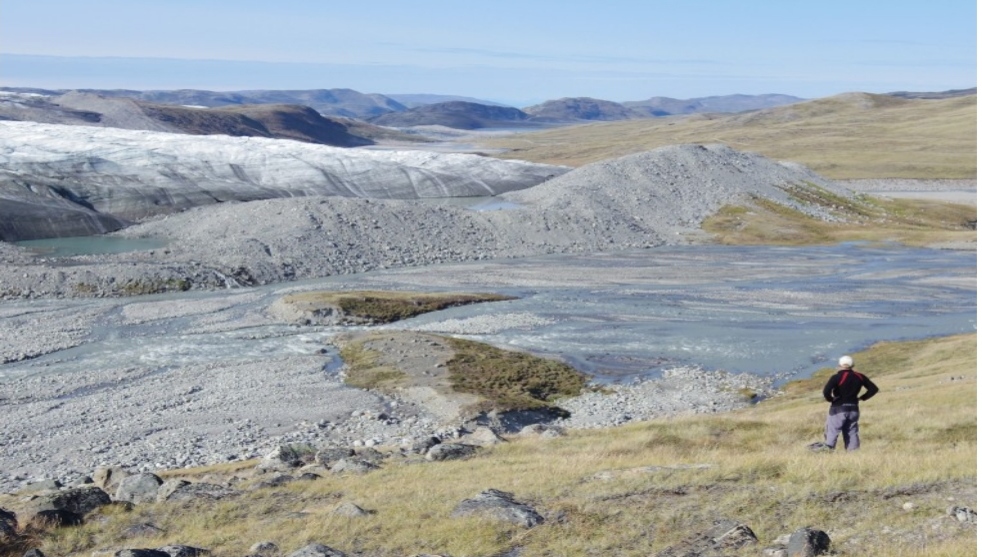Global warming is making Greenland greener
By Denise Chow
A study of satellite images found that an estimated 11,000 square miles of Greenland’s ice sheet and glaciers have melted over the past 30 years, giving way to vegetation.

From above Sydgletscher looking to Bowdoin Fjord, at Qaanaaq, northwest Greenland Courtesy of Mark Smith
Global warming is turning Greenland green.
Parts of Greenland’s ice sheet and glaciers that melted over the past three decades have been replaced by wetlands, shrub vegetation and areas of barren rock, according to a new study that used satellite images to track changes since the 1980s.
The findings, published Tuesday in the Journal Scientific Reports, raise concerns about how Greenland’s retreating ice could threaten the stability of the landscape, exacerbate rising sea levels and contribute further greenhouse gas emissions in areas that have turned into methane-producing wetlands.
Greenland is often considered “ ground “ zero for climate crisis because even small shifts in temperature can have outsize impacts across the entire Arctic region — and around the world. Scientists have estimated that if the Greenland ice sheet were to melt completely, it could raise global sea levels by more than 23 feet.
A comparison between land cover classifications for the late 1980s and for the late 2010s at 30-meter resolution reveals greening as vegetation coverage expands, especially in the southwest and the northeast. Michael Grimes PhD / University of Leeds
The study found that an estimated 11,000 square miles of Greenland’s ice sheet and glaciers have melted over the past 30 years — an area roughly nine times the size of Rhode Island and equivalent to around 1.6% of Greenland’s total ice cover. Using satellite images, the researchers found that the amount of land with vegetation growing on it has increased by 33,774 square miles from the mid-1980s through the mid-2010s. Some of the most significant changes were observed across south-western, eastern and north-eastern Greenland, according to the study.
Wetlands, in particular, nearly quadrupled across Greenland over the study period, particularly around the town of Kangerlussuaq on the western coast.
The observed changes are not just bad news for Greenland’s ice sheets and glaciers, said Jonathan Carrivick, an Earth scientist at the University of Leeds in the United Kingdom and one of the authors of the study.
“We have seen signs that the loss of ice is triggering other reactions which will result in further loss of ice and further ‘greening’ of Greenland, where shrinking ice exposes bare rock that is then colonised by tundra and eventually shrub,” said Carrivick.
“At the same time, water released from the melting ice is moving sediment and silt, and that eventually forms wetlands and fenlands,” he said.

Russell Glacier and proglacial area near Kangerlussuaq, west Greenland.Courtesy Jonathan Carrivick
The loss of ice also affects the overall temperature of the land. Snow and ice can reflect sunlight that hits Earth, which in turn keeps the planet cooler. When ice retreats, the exposed bedrock and new areas of vegetation absorb more of the sun’s energy, increasing the temperature of the land surface and exacerbating global warming.
Wetlands are also home to tiny microbes that feed on organic material and release methane, a type of potent greenhouse gas. As such, these aquatic habitats can themselves become significant sources of emissions.
Michael Grimes, a Ph.D. candidate at the University of Leeds and lead author of the study, said Greenland’s retreating ice and expanding vegetation have important cultural consequences as well, particularly for indigenous populations that rely on these ecosystems for traditional hunting practices.
ABC News




